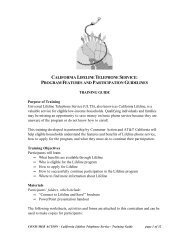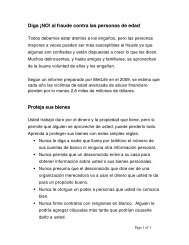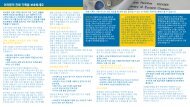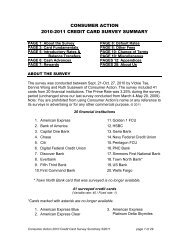Using Credit Wisely Seminar - Consumer Action
Using Credit Wisely Seminar - Consumer Action
Using Credit Wisely Seminar - Consumer Action
- No tags were found...
Create successful ePaper yourself
Turn your PDF publications into a flip-book with our unique Google optimized e-Paper software.
Break (15 minutes)Announce a 20-minute break. Make yourself available for a few minutes to direct people to therestroom or a place to get drinks and snacks.Leave the following slide onscreen during the break.➡SLIDE #10Session TwoComparing <strong>Credit</strong> Cards (20 minutes)Introduction: Different credit cards cater to different needs. Before you apply for a credit card, youshould determine that it is a card that meets your needs, and that it is the best deal available to you.To find the right card, you have to know how you will use it. For example, if you are someone whoalways pays your balance in full each month, then the interest rate will be less important to you thancertain other terms, such as transaction fees or rewards. If you’re someone who travels a lot, thenthe currency conversion fee will be more important to you than it would be to someone who veryrarely travels outside the U.S.Once you have determined how you will use the card and which terms, features and benefits aremost important to you, you are ready to begin shopping for a credit card.➡SLIDE #11Per slide notes, go over each item.Upon reaching the last item in the list, ask the class, “Where do you find this information when youare considering a credit card?”Ask participants to remove the Sample <strong>Credit</strong> Card Solicitation from their packets.“By law, all credit cards must disclose certain information with every solicitation.” Go over each itemin the boxes, from Annual Percentage Rate (APR) for Purchases through the smaller box, below themain box, where balance transfer, late, and other fees are disclosed. Also, point out the paragraphbeneath that, which explains that payments will be applied to lower-rate balances before higher-ratebalances.(TIP: Prepare for this section by highlighting key information on your copy of the sample disclosure.)Then ask the following questions to get participants thinking about how to read and evaluate a creditcard disclosure.© 2009 <strong>Consumer</strong> <strong>Action</strong> Page 10 of 20


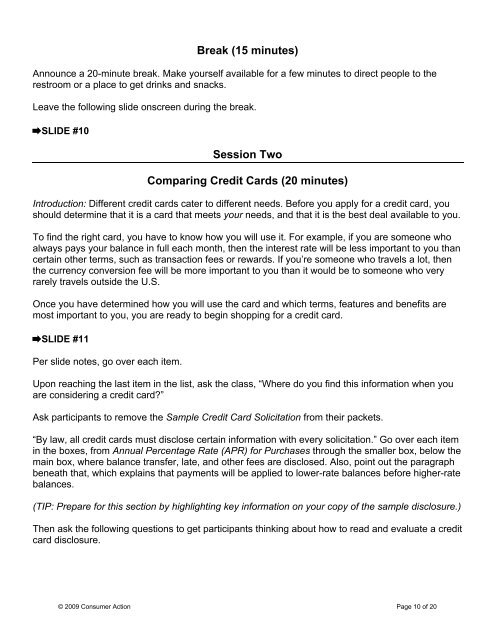

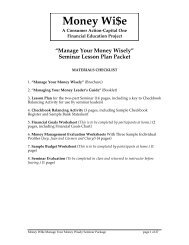
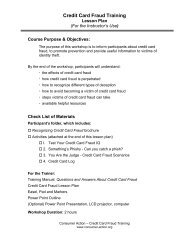


![Debt Collection Issue [Winter 2007-2008] - Consumer Action](https://img.yumpu.com/43405069/1/169x260/debt-collection-issue-winter-2007-2008-consumer-action.jpg?quality=85)


